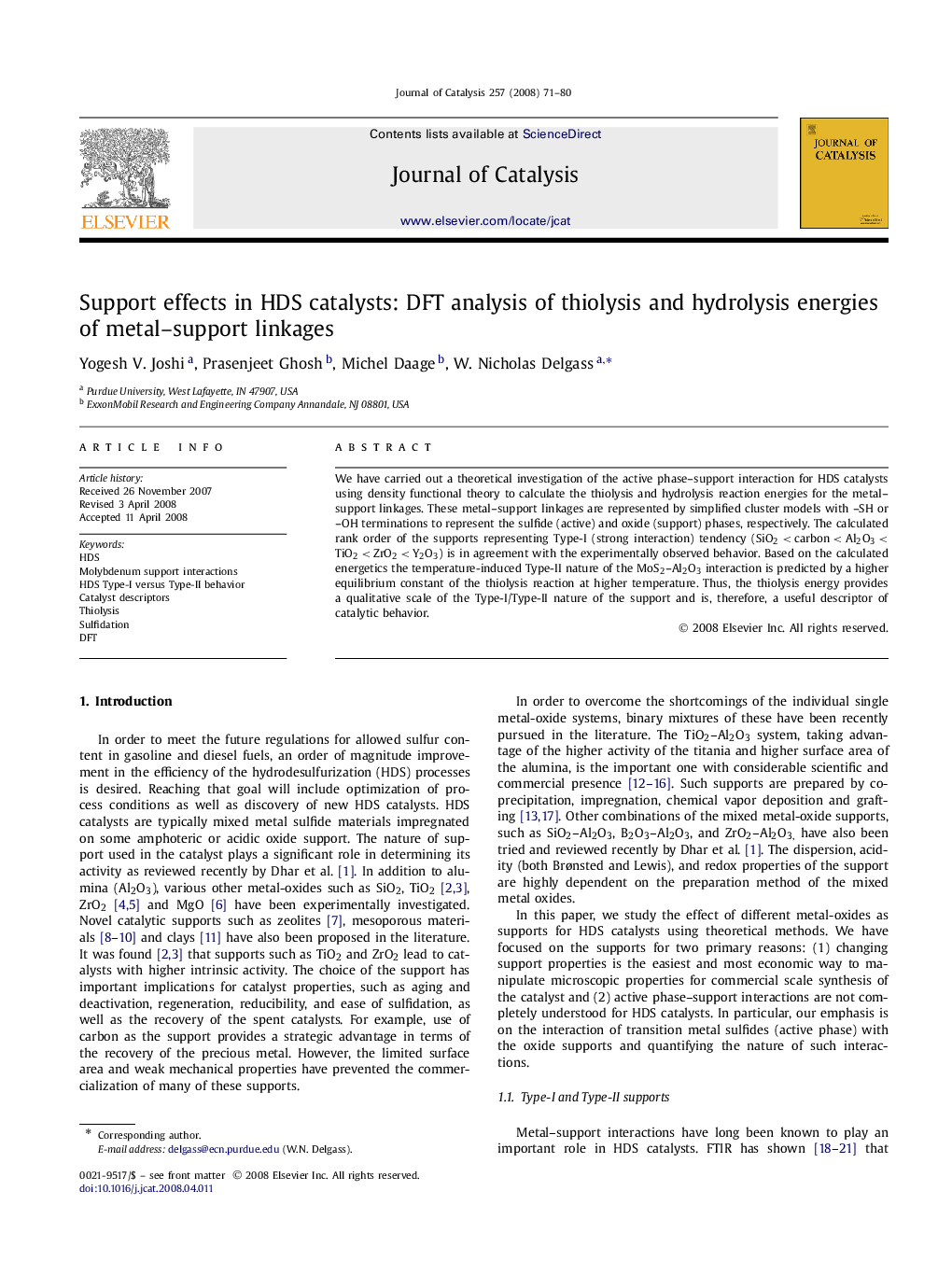| Article ID | Journal | Published Year | Pages | File Type |
|---|---|---|---|---|
| 62422 | Journal of Catalysis | 2008 | 10 Pages |
We have carried out a theoretical investigation of the active phase–support interaction for HDS catalysts using density functional theory to calculate the thiolysis and hydrolysis reaction energies for the metal–support linkages. These metal–support linkages are represented by simplified cluster models with SH or OH terminations to represent the sulfide (active) and oxide (support) phases, respectively. The calculated rank order of the supports representing Type-I (strong interaction) tendency (SiO2 < carbon < Al2O3 < TiO2 < ZrO2 < Y2O3) is in agreement with the experimentally observed behavior. Based on the calculated energetics the temperature-induced Type-II nature of the MoS2–Al2O3 interaction is predicted by a higher equilibrium constant of the thiolysis reaction at higher temperature. Thus, the thiolysis energy provides a qualitative scale of the Type-I/Type-II nature of the support and is, therefore, a useful descriptor of catalytic behavior.
